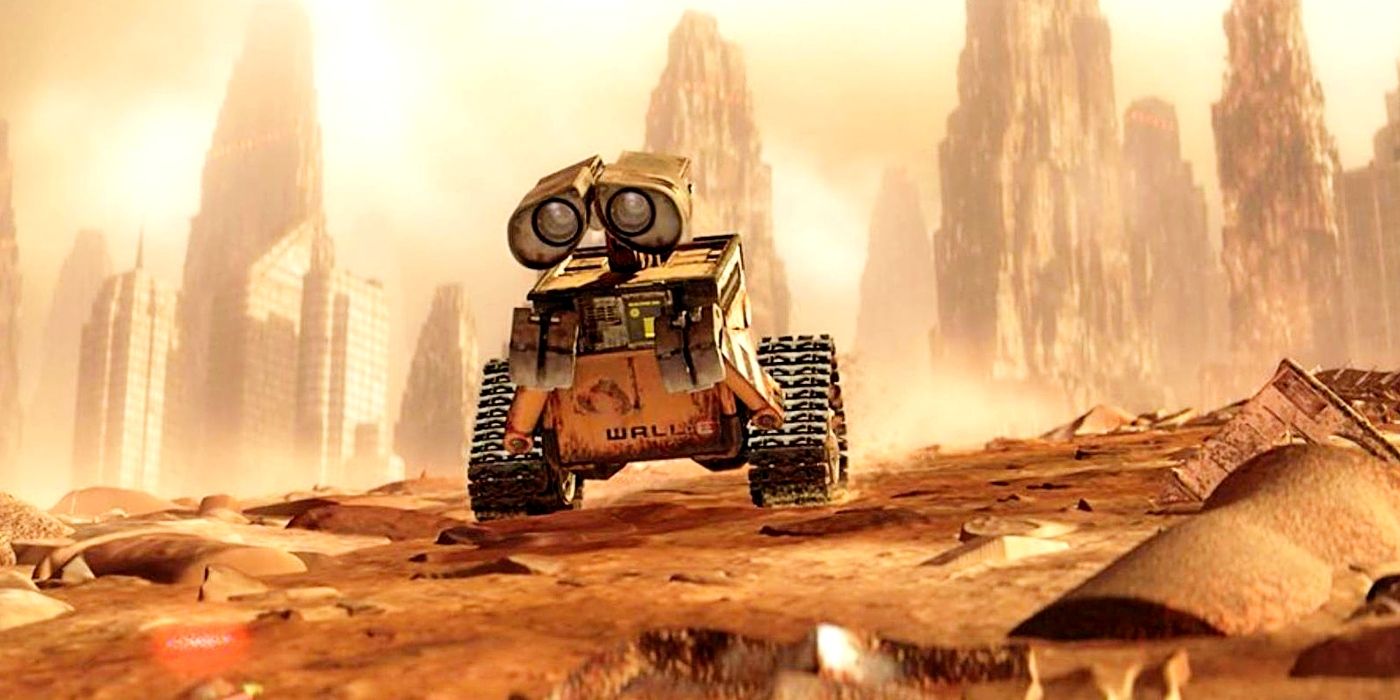WALL-E director Andrew Stanton discusses the Pixar movie’s future predictions and the way he is upset by a few of them coming true. Launched in 2008, WALL-E is one in all Pixar’s most critically acclaimed and beloved movies, telling the story of a small, waste-collecting robotic within the distant future who slowly works to scrub up an deserted, garbage-ridden Earth. WALL-E ultimately encounters EVE, a modern new probe, and the 2 embark on an journey throughout the galaxy. The movie was nominated for six Academy Awards and ended up profitable Greatest Animated Function.
As a part of the particular characteristic in WALL-E‘s current Criterion Assortment launch, shared courtesy of SlashFilm, director Andrew Stanton reveals that the movie’s correct predictions for the longer term truly go away him feeling considerably upset. He explains that a lot of his imaginative and prescient of the Earth’s future is usually designed to serve WALL-E’s character arc and to create empathy for the movie’s lonely little robotic whereas nonetheless feeling plausible to audiences. Try Stanton’s full remark under:
“I stated it within the doc: I do not like being proper on so a lot of these points. I wasn’t attempting to foretell the longer term. It is science fiction, not science reality. I used to be simply attempting to foretell a plausible future that you’d purchase in order that we may settle for that perhaps humanity left and this character was alone. It was very selfishly only for character funding, however you need to go along with issues that do not distract you, like, ‘I do not purchase that,’ as a result of if the viewers goes like that, they don’t seem to be investing in the primary character. You go along with as a lot logic as you can presumably stretch it.”
How WALL-E Additionally Offers Hope For The Future
A lot of WALL-E‘s first act units up Stanton’s post-apocalyptic Earth, which was way back deserted by people after environmental neglect and unfettered consumerism left the planet uninhabitable. The movie then later introduces future people who’ve turn out to be so obese that they depend on floating gravity chairs to be able to traverse their new spaceship properties. Regardless of the Pixar movie’s darkish imaginative and prescient for the longer term, the movie does finish on a hopeful notice, seeing people return to Earth to take their first unaided steps. Jeff Garlin’s Captain character even begins discussing what varieties of vegetation they need to begin to develop in Earth’s soil.
Though the film does not go into specifics relating to what’s subsequent for humanity and Earth on the earth of the story, the ending to WALL-E suggests that it’s not too late to show issues round in the case of environmental points and humanity’s attitudes towards the pure world. Like all different Pixar movies, together with Inside Out, Soul, Discovering Nemo, Coco, Turning Purple, and most just lately, Lightyear, WALL-E is an journey meant for all ages, that means an upbeat, constructive ending is one thing of a requirement. Actual-world local weather change and environmental neglect have actually had some everlasting penalties however, because the film suggests, it is by no means too late to work towards constructing a greater world.
After all, Stanton’s movie takes place far sooner or later, presenting a imaginative and prescient of Earth that has not but come to cross. Whereas the particular plot factors and world-building in WALL-E could seem farfetched now, it is actually the film’s underlying themes that proceed to resonate so powerfully. Pixar is understood for tapping into common feelings of audiences of all ages, and WALL-E stays among the best examples of this, with the film’s themes solely changing into extra related with every passing day.
Supply: SlashFilm




